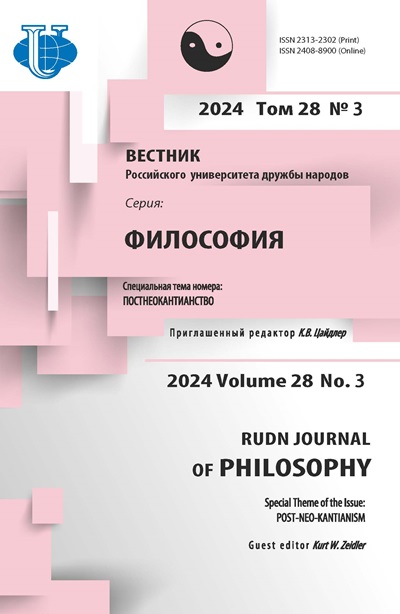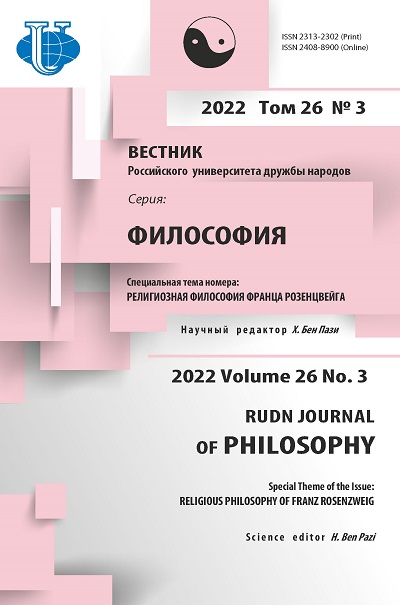Очарование философии Ф. Розенцвейга
- Авторы: Бен Пази Х.1
-
Учреждения:
- Университет Бар-Илан
- Выпуск: Том 26, № 3 (2022): РЕЛИГИОЗНАЯ ФИЛОСОФИЯ ФРАНЦА РОЗЕНЦВЕЙГА
- Страницы: 485-492
- Раздел: РЕЛИГИОЗНАЯ ФИЛОСОФИЯ ФРАНЦА РОЗЕНЦВЕЙГА
- URL: https://journals.rudn.ru/philosophy/article/view/32101
- DOI: https://doi.org/10.22363/2313-2302-2022-26-3-485-492
Цитировать
Полный текст
Аннотация
Философские работы Ф. Розенцвейга представляют интерес и имеют особое значение как для академических исследований, так и для личных экзистенциальных поисков. В своих работах Розенцвейг глубоко переосмысливает основы иудейской и христианской религиозной жизни, связанные с самой сутью человеческого существования. Страх смерти, следование платоновскому эросу, преодоление атеизма в духе Гёте в опыте веры - эти ключевые мотивы задают сложный дискурс теологической и философской мысли Розенцвейга, приглашая читателя в поистине волшебное духовное путешествие. Статья представляет собой интригующее введение к настоящему выпуску «Вестника РУДН. Серия: Философия», который призван раскрыть различные аспекты философии одного из самых выдающихся немецко-еврейских мыслителей двадцатого века, посредством обращения к таким темам, как критика и восприятие немецкого идеализма и экзистенциализма, «новое мышление» как философского система, философская интерпретация библейских текстов, Каббалы и мистицизма.
Ключевые слова
Об авторах
Ханох Бен Пази
Университет Бар-Илан
Автор, ответственный за переписку.
Email: benpazh@mail.biu.ac.il
профессор кафедры еврейской философии Израиль, 5290002, Рамат Ган
Список литературы
- Rosenzweig F. The Star of Redemption. [Hallo WW, translator]. New York, Chicago, San Francisco: Holt, Rinehart and Winston; 1971.
- Rosenzweig F. Understanding the Sick and the Healthy: A View of World, Man, and God. [Glatzer NN, editor, translator; Putnam H, introduction]. Cambridge, MA: Harvard University Press; 1999.
- Rosenzweig F. Der Mensch und sein Werk. In: Rosenzweig F. Gesammelte Schriften, I. Hague: Martinus Nijhoff; 1979.
- Ben Pazi H. Love Discourse: Rosenzweig vs. Plato. In: Turner Y, Amir Y, Brasser M, editors. Faith, Truth and Reason - The Philosophy of Franz Rosenzweig. Freiburg im Breslau: K. Alber; 2012. рp. 105-124.
- Rosenzweig F. Philosophical and Theological Writings. Franks PW, Morgan M, translators, editors. Indianapolis, IN: Hackett Publishing; 2000.
- Rosenzweig F. The Star of Redemption. [Galli BE, translator]. Madison, Wisconsin: Wisconsin University Press; 2005.
- Rosenzweig F. Der Stern der Erlösung. Frankfurt am Main: Kauffmann Verlag; 1921.
- Susman M. Exodus from Philosophy. In: Udoff A, Galli BE, editors, translators. Franz Rosenzweig’s The New Thinking. Syracuse, NY: Syracuse University Press, 1999. рp. 105-111.
















